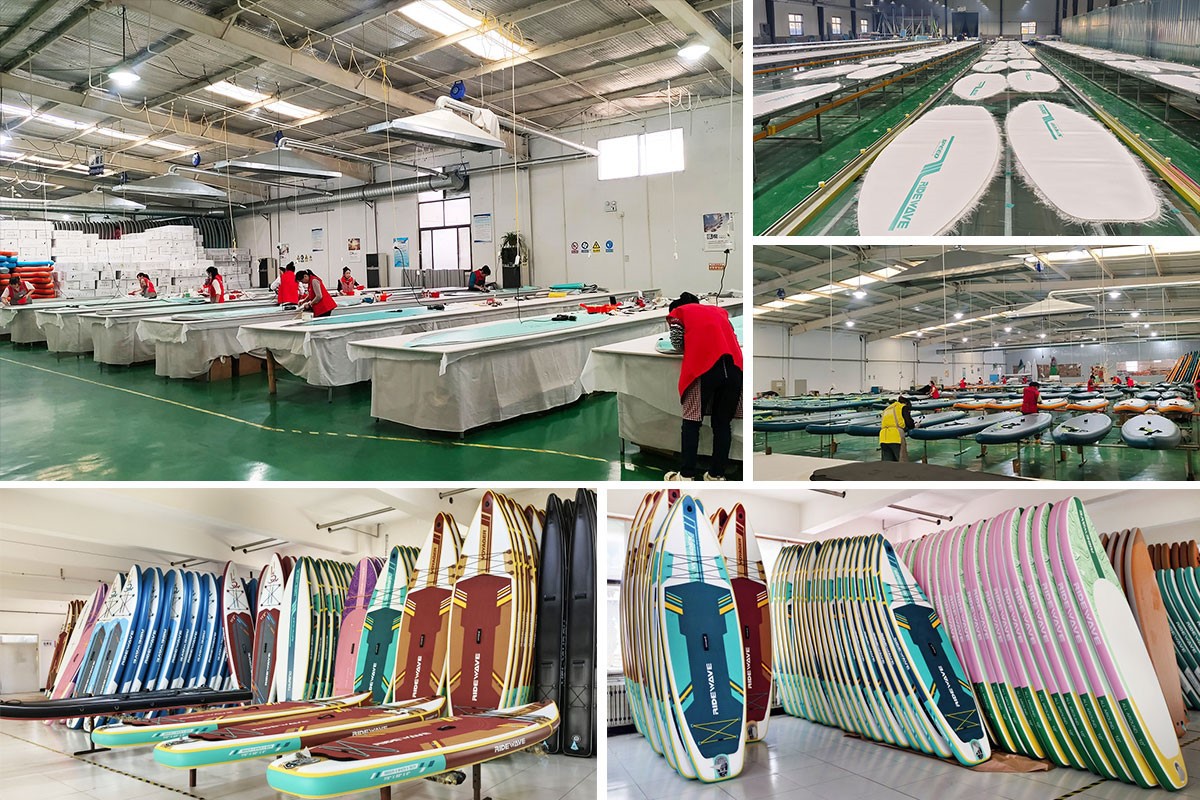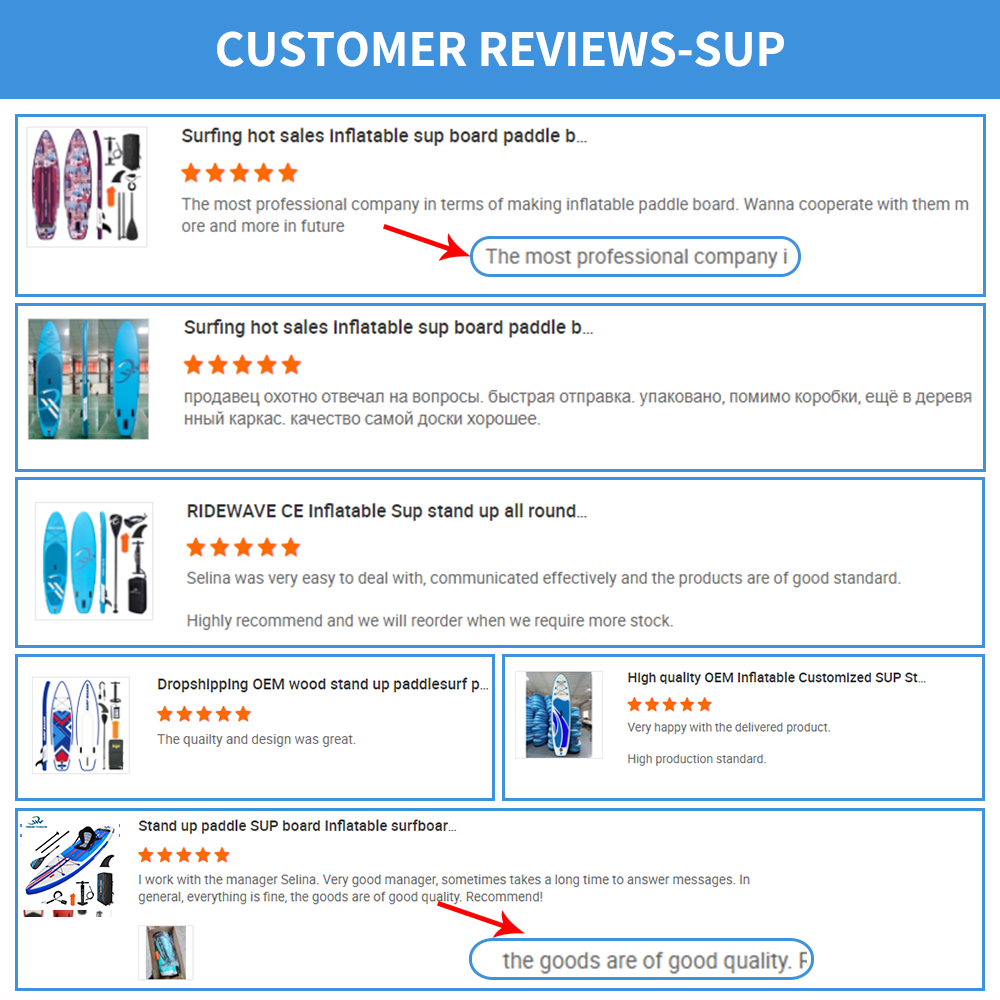How To Choose The Right Manufacturer: 10 Key Questions Every B2B Buyer Must Ask
Jun 20, 2025
Leave a message
Choosing the right manufacturer is one of the most critical decisions for any B2B buyer. Whether you're launching a new paddle board brand or scaling your current product line, your manufacturer determines your product quality, lead times, brand reputation, and long-term profitability. The wrong choice can lead to delays, quality issues, lost customers, and even legal trouble.
The key is to ask the right questions early. In this comprehensive guide, we'll walk you through 10 crucial questions every B2B buyer should ask a potential manufacturer-especially in the stand-up paddle board (SUP) industry. Each section offers practical tips, red flags to avoid, and examples from trusted brands like Ridewave, a leading manufacturer known for its innovation, transparency, and support of over 200 global partners.
What Is Your Manufacturing Capacity and Lead Time?
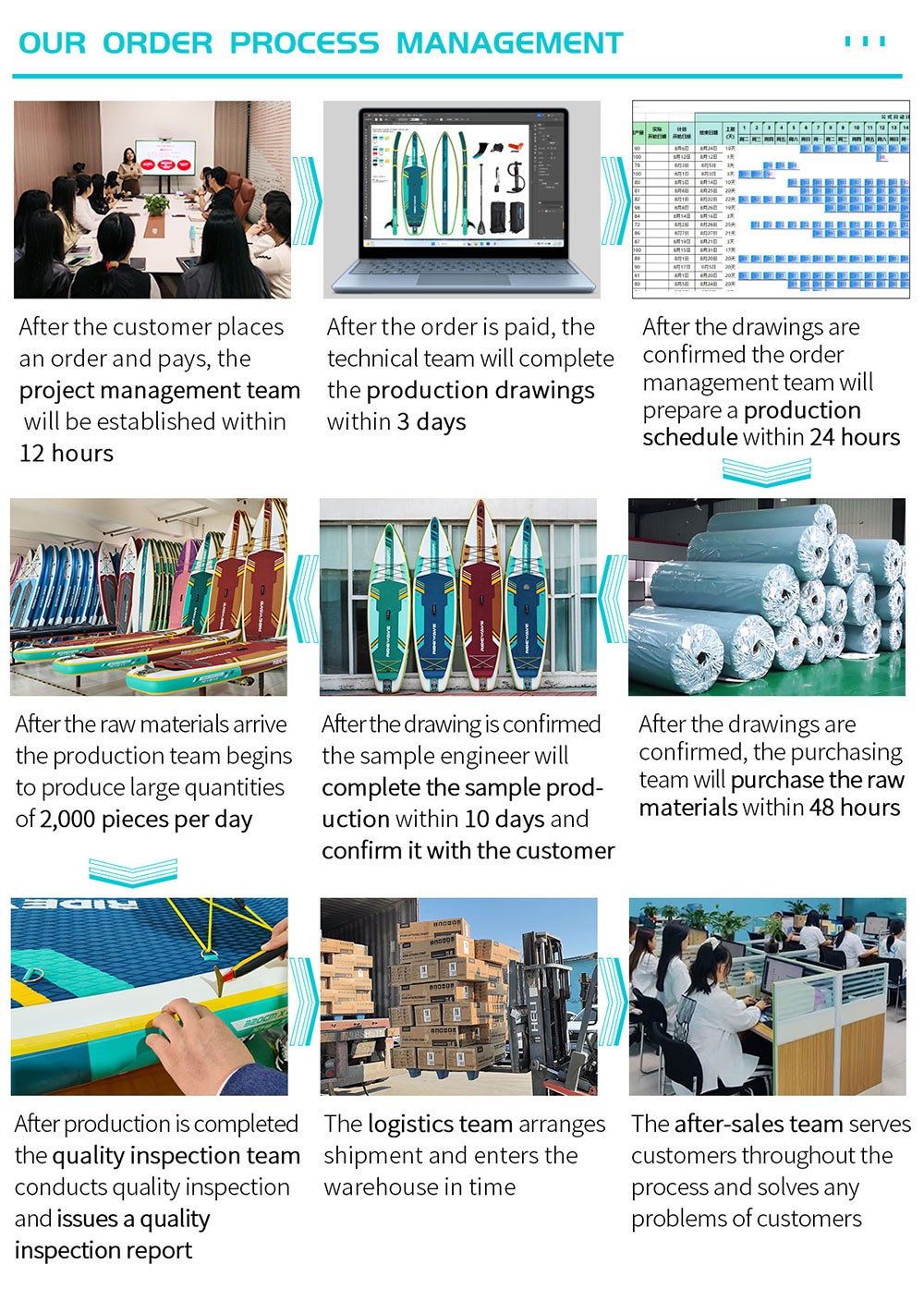
Before committing to a partnership, you need to understand a manufacturer's capacity and how quickly they can produce and ship your products. This is particularly important in the paddle board industry, where demand can be highly seasonal.
What to Ask:
What is your monthly production capacity?
How long does it take to complete an average order?
Can you handle increased demand during peak seasons (e.g., spring/summer)?
Why It Matters:
If your manufacturer cannot scale with your business, you risk stockouts and lost sales. Delays also impact customer satisfaction and your online reputation.
Ridewave Example:
Ridewave operates a highly efficient production line capable of producing thousands of inflatable SUPs per month. Their average lead time for ODM orders is 30-35 days, and for custom OEM projects, it's typically 45-50 days. During high season, they prepare by expanding shifts and optimizing logistics planning.
Red Flags:
Vague answers about capacity
Sudden changes in promised lead times
Poor planning around seasonal cycles
Pro Tip: Always get a written lead time estimate, and ask if you can reserve production slots in advance for peak season
Do You Offer OEM or ODM Services-or Both?
Understanding the type of manufacturing service a supplier offers is essential. OEM (Original Equipment Manufacturing) and ODM (Original Design Manufacturing) suit different stages of business growth.
OEM: You provide your unique design; the manufacturer produces it to spec.
ODM: The manufacturer offers ready-to-produce designs that you can customize with your branding.
Which Is Right for You?
Startups may prefer ODM for faster market entry.
Established brands with in-house design capabilities often go with OEM.
Ridewave's Solution:
Ridewave offers both OEM and ODM services. Their ODM line includes over 30 proven paddle board designs optimized for performance and stability. These can be branded and shipped quickly with MOQs as low as 30 units. For OEM clients, Ridewave provides full design assistance, technical drawings, and material consultations.
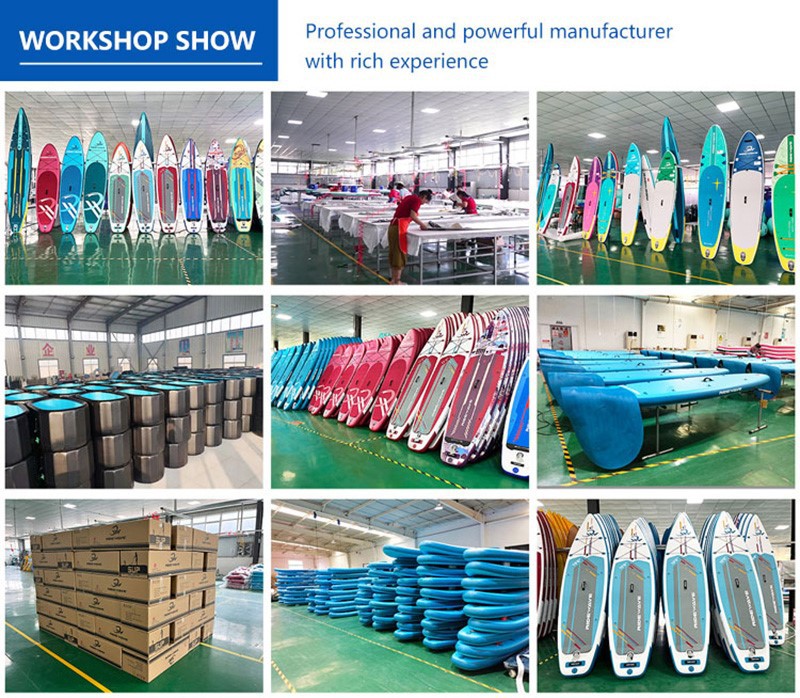
What Are Your Quality Control Standards and Certifications?
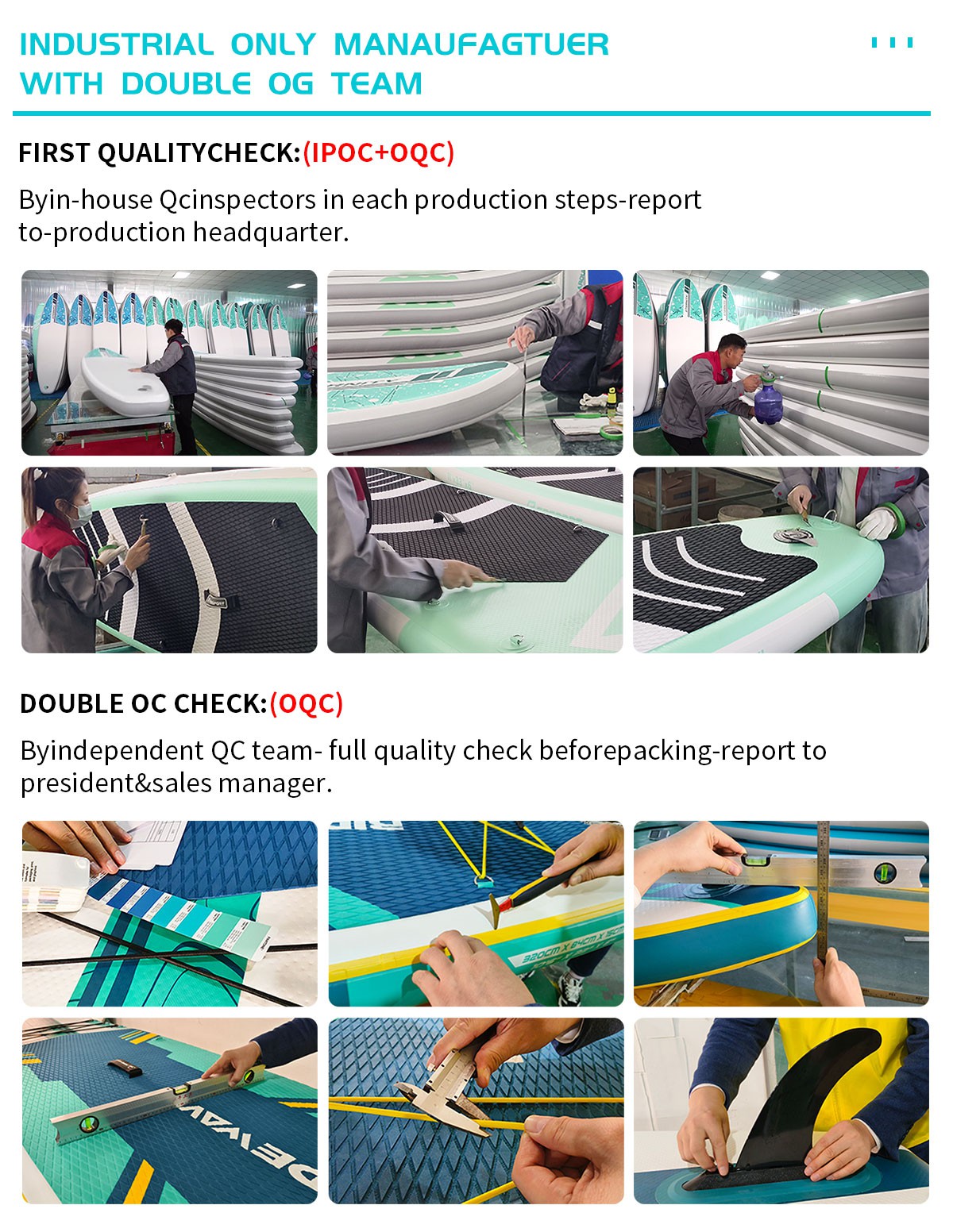
A high-quality paddle board can boost your reputation, reduce returns, and prevent accidents. You must verify how your manufacturer manages quality and safety.
What to Ask:
What quality control measures are in place?
Can you provide certifications or third-party test results?
How do you handle product defects?
Ridewave's Commitment to Quality:
Ridewave performs a rigorous 3-stage inspection process:
Material Inspection: Before assembly, raw materials are checked for consistency and compliance with environmental standards.
Inflation Testing: Every board is inflated for 72 hours to test for leaks and pressure integrity.
Final QC: Visual inspection, valve testing, and paddle/accessory matching before packing.
They also comply with ISO 9001, CE, and SGS certification requirements.
Red Flags:
No standardized QC documents
Avoidance of third-party audits
Lack of material or safety certifications
Pro Tip: Request a copy of their inspection checklist and visit the factory (or request a virtual tour) to observe their process firsthand.
What's Your MOQ (Minimum Order Quantity)?
MOQ affects how easily you can test the market or launch a new product. High MOQs can be a barrier for small businesses and test batches.
What to Ask:
What is your MOQ for ODM and OEM orders?
Can I mix models/colors in one order?
Why It Matters:
Flexible MOQs let you test new designs or enter new markets without heavy upfront investment. If a manufacturer requires 300+ units per model, that's a big risk.
Ridewave's Advantage:
Ridewave offers low MOQs:
30 units for ODM models (can mix designs)
100 units for OEM orders
This flexibility helps first-time buyers minimize risk while maintaining quality.
Red Flags:
Very high MOQs with no justification
Inflexibility in mixing SKUs in one shipment
Pro Tip: Negotiate a pilot order first. If it goes well, scale up gradually.
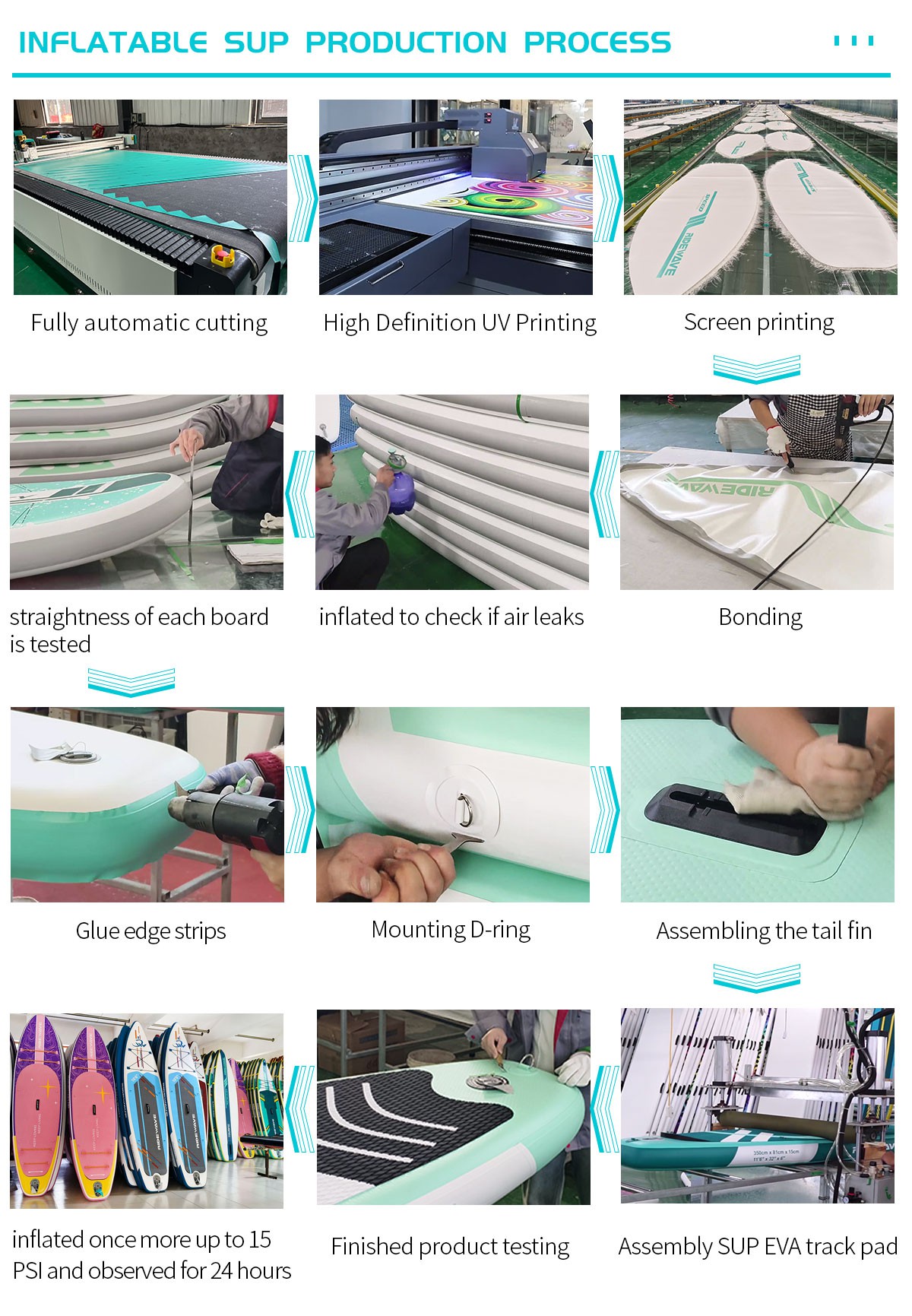
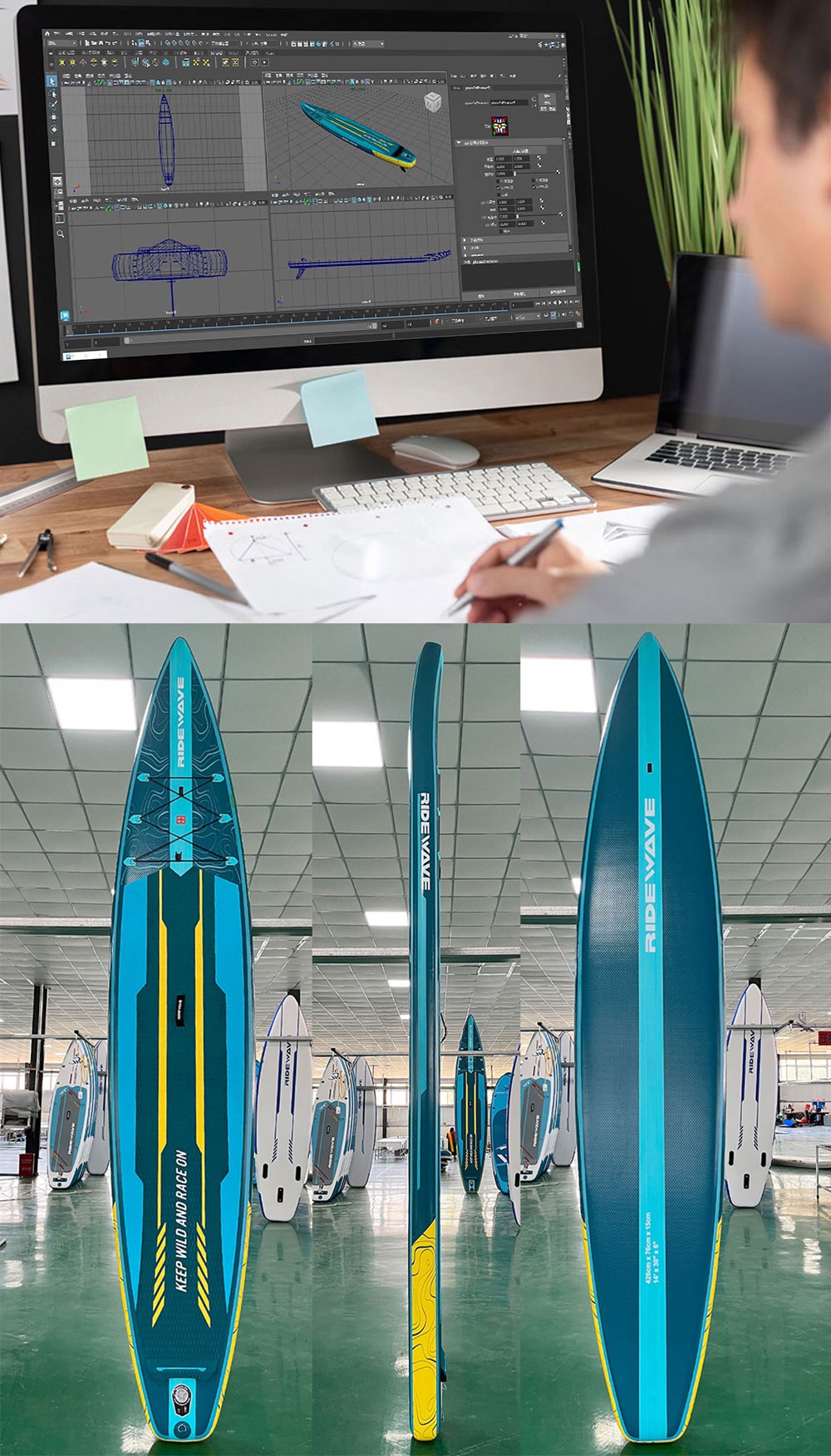
Before placing a bulk order, you should test a sample. This is essential for verifying product quality, fit, and finish.
What to Ask:
How long does it take to produce a sample?
What branding options can be included?
Can I get a pre-production prototype?
Ridewave's Sample Process:
ODM sample with your branding in 7-10 business days
OEM prototype with full customization in 2-3 weeks
Samples can include packaging, accessories, and logo embossing
Red Flags:
No sample service
Long delays in producing prototypes
Charging unreasonably high sample fees
Pro Tip: Ask if the sample cost can be credited toward your first bulk order.
How Do You Handle Branding and Customization?
Brand identity is key in today's competitive paddle board market. Your manufacturer should help you differentiate your product through custom branding.
What to Ask:
Can I choose my own colors, patterns, and textures?
Can you provide mockups or renderings before production?
What branding options are available for packaging and accessories?
Ridewave's Branding Support:
Ridewave supports:
Custom deck pad colors, patterns, and EVA textures
Logo printing on board, paddle, backpack, leash, and pump
Custom retail packaging and instruction manuals
Pre-production mockups with up to 3 revisions
Red Flags:
No visual proofing before mass production
Limited logo placement options
Pro Tip: Ask for branding templates and a full list of customization areas.
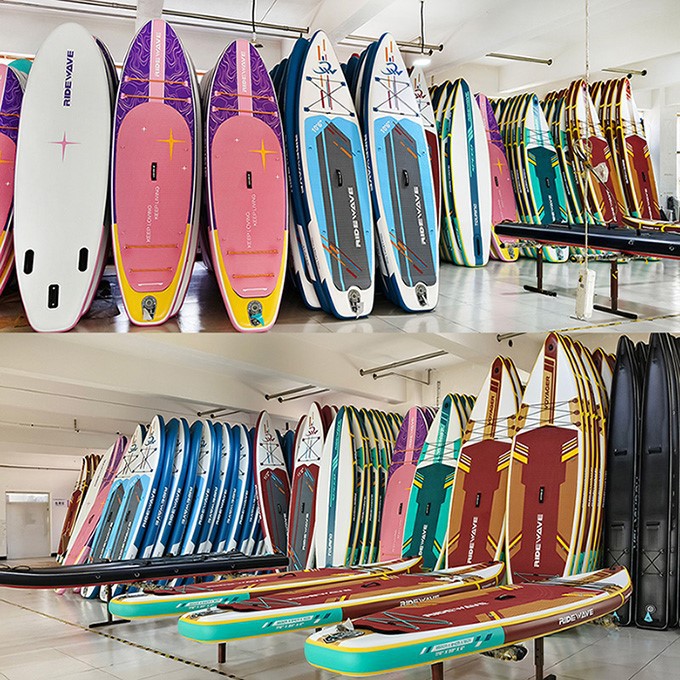
What Is Your Communication Process Like?
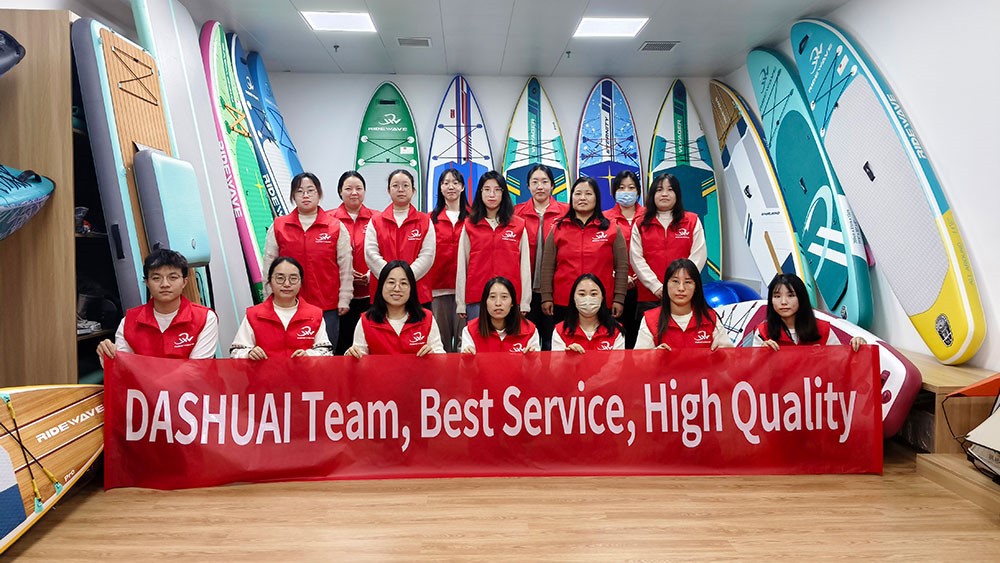
Effective communication minimizes errors and delays. Your manufacturer should be responsive, transparent, and aligned with your working hours.
What to Ask:
Who will be my main point of contact?
What are your response times for inquiries or issues?
Do you support my time zone/language?
Ridewave Communication:
Ridewave assigns a dedicated project manager to each client. Support is available in English, Chinese, and Spanish. Most inquiries are answered within 12-24 hours. Progress updates and production photos are shared regularly.
Red Flags:
No clear contact person
Long response times
Language barriers causing miscommunication
Pro Tip: Use platforms like WeChat, WhatsApp, or email based on your comfort. Confirm preferred communication methods in advance.
What Are Your Shipping and Logistics Solutions?
Shipping can be complex and expensive. Your manufacturer should support you with packaging efficiency and flexible shipping options.
What to Ask:
Do you offer DDP, FOB, CIF terms?
Can you coordinate with freight forwarders?
How do you minimize container space usage?
Ridewave's Logistics Edge:
Durable dual-wall packaging reduces damage
Custom-sized boxes to maximize container space
Optional logistics coordination for sea, air, or rail shipping
Bulk shipping status tracking support
Red Flags:
No experience with international shipping
Excessively bulky or unprotected packaging
Pro Tip: Ask for packaging specs and loading photos from past shipments.
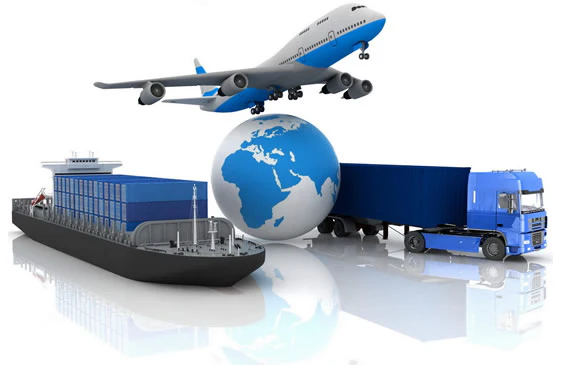
Can I Visit Your Factory or See Virtual Tours?
Transparency builds trust. Visiting the factory allows you to verify conditions and meet the team.
What to Ask:
Can I schedule an in-person or virtual tour?
Do you allow third-party inspections?
Can I view your production and QC process live?
Ridewave's Open-Door Policy:
Clients are welcome to visit Ridewave's factory in China or book a live video walkthrough. Many clients also hire third-party agencies to conduct factory audits, which Ridewave supports fully.
Red Flags:
Refusal to show factory or share videos
Blocking third-party inspections
Pro Tip: Even if you can't travel, request a detailed factory video or a live Zoom call during production.
What Other Clients Have You Worked With?
Past performance is a strong indicator of future reliability. Ask for references or proof of successful partnerships.
What to Ask:
Who are your current or past clients?
Can you share testimonials, logos, or case studies?
Are there any businesses in my region I can speak with?
Ridewave's Global Trust:
Ridewave has served over 200 B2B customers across North America, Europe, Oceania, and Asia-including distributors, retailers, rental fleets, and private-label e-commerce brands. Case studies and references are available upon request.
Red Flags:
Vague or unverifiable client claims
No social proof (e.g., logos, reviews, testimonials)
Pro Tip: Contact a past client if possible. Ask how the manufacturer handles deadlines, customization, and post-sale support.
Finding the right manufacturing partner is about more than price. It's about quality, communication, flexibility, and shared vision. By asking the 10 key questions in this guide, you can avoid costly mistakes and set your paddle board business up for long-term success.
Ridewave stands out as a trusted partner with deep experience, flexible service models, and a focus on innovation. Whether you're just starting or ready to scale, they offer the tools and support needed to grow your brand with confidence.
Related Blog Articles
If you found this guide helpful, don't miss these expert insights:
1.Top Features B2B Buyers Should Look for in a Paddle Boards Manufacturer
2.Why 2025 Is the Perfect Year to Start Your Paddle Board Brand
3.How to Build a Paddle Board Brand: The Ultimate B2B Success Roadmap
4.Common Mistakes to Avoid When Importing Paddle Boards from China
5.OEM vs. ODM: Which Is Better for Your SUP Business?
These resources will help you master everything from supplier selection to brand positioning. At Ridewave, we're here to support you at every step of your B2B paddle board journey.


